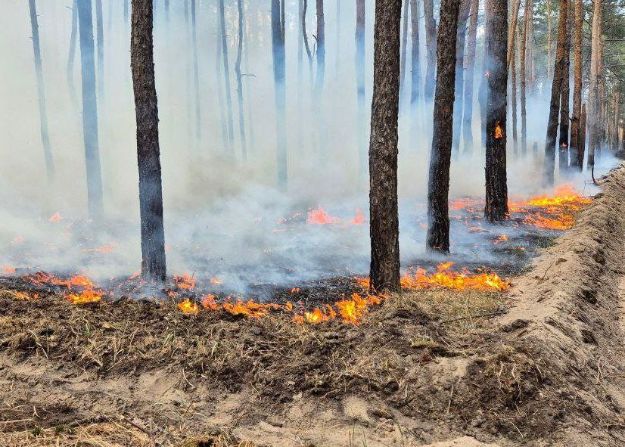Forest Fire in Donetsk Region: A Wake-Up Call for Safety and Awareness
A forest fire erupted near the village of Shurovo in the Donetsk region, ignited by ongoing shelling from the Russian Federation. This devastating event highlights not only the immediate dangers of such conflicts but also the long-term implications for the environment and local communities. Emergency services faced significant challenges while battling this blaze, emphasizing the need for better preparedness and proactive measures.
The Struggle Against the Flames
Firefighters worked tirelessly for over seven hours to contain the flames, demonstrating immense courage and dedication. Despite their best efforts, the fire consumed approximately 15 hectares of forested land. This loss raises critical questions about environmental impacts and local safety. Just think about it: a single fire can lead to the destruction of countless habitats and disrupt the delicate balance of local ecosystems.
Real-Life Consequences
The aftermath of such fires can be felt long after the flames are extinguished. For instance, in regions affected by similar wildfires in the past, studies show that air quality can deteriorate significantly, leading to health issues among residents. According to the World Health Organization, poor air quality contributes to millions of premature deaths each year. This makes it imperative for communities to implement effective fire management strategies and educate residents on preventive measures.
Preventive Measures and Community Resilience
Local authorities are now assessing the damage and ramping up efforts to prevent future incidents. This ongoing conflict not only puts the environment at risk but also threatens the safety of nearby communities. Here are some unique tips that can help communities better prepare for such emergencies:
- Regular Fire Drills: Simulation exercises can help local residents understand evacuation routes and safety procedures.
- Education Programs: Workshops on fire prevention techniques and the importance of maintaining defensible space around homes can empower citizens to take action.
- Community Volunteers: Establishing a network of volunteers to assist firefighters can enhance response times and effectiveness when emergencies arise.
In conclusion, the burden of responding to forest fires should not rest solely on the shoulders of emergency services. It takes a community-driven approach, combining government action and grassroots initiatives, to ensure safety and prevent further destruction. This tragedy serves as a poignant reminder of our collective responsibility to protect both our environment and our communities against the ravages of conflict and climate change.
As we reflect on the devastating fire near Shurovo, let us collectively commit to fostering resilience and preparing for the challenges that lie ahead. Together, we can build a safer, more sustainable future for all.





